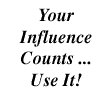

Reprinted from www.libertylobby.org, home of The SPOTLIGHT archive
Stealth Epidemic Spreading Across U.S.; Alternative Therapies Can Help Fight Diabetes
- Since the 1950s, through misdiagnosis, an epidemic has been raging in America. But most people remain wholly unaware.
A "death certificate shuffle" exists that has the effect of concealing the true scope of a hidden disease epidemic that rages among us: diabetes. The shuffle works like this: The "cause of death" that appears on the death certificate depends upon the speciality of the doctor who is treating the patient when death occurs.
This stealth disease, diabetes, can be cured when patients consult alternative health providers.
Since our stealth disease has hundreds of symptoms, it masquerades under many different medical aliases and its symptoms are treated by many different specialists. In 1995 this one disease, then being treated by numerous competing specialists, accounted for over 40 percent of the deaths from all causes, according to a report in American Demographics.
In studying this disease, scientists noted that each of the medical specialties had their own proprietary name for their own proprietary symptom set which they recognized stop their own proprietary disease and treated with their own ineffective proprietary protocol. This confusion forced researchers who needed to know what they were talking about, to rename the disease "Syndrome X."
Syndrome X is the same disease that was known in the 1930s simply as diabetes. Our modern, compartmentalized "medical Babylon" lists such symptoms of this disease as atherosclerosis, elevated cholesterol, hypertension, elevated glucose, elevated insulin, stroke, cardiomyopathhy, kidney and liver failure, neuropathy, retinopathy, male impotence, blindness and glaucoma, gangrene and many others.
Recently a connection between Syndrome X and ADHD has been made.
A compelling case exists to show that several forms of cancer are a result of a failure to effectively treat Syndrome X in its early stages.
This story can be traced to the extensive reorganization that shook the medical community in 1949. In that year many of the medical specialties that we know today emerged from what had been up to then the general practice of medicine. Thus the "heart specialist," the "endocrinologist," the "hepatic and billiary specialist" and many other specialties began to compete for market share. It became fashionable, for example, to declare that diabetes increased cardio-vascular risk where formerly it was well understood that heart failure was a direct consequence of untreated or poorly treated diabetes.
This reorganization of the medical community was greatly influenced by the emergence of a disease, then known as diabetes, that had exploded in the 1930s and 1940s to epidemic proportions. From an incidence of .0028 percent per capita in the late 1800s diabetes soared over a thousand times to become a serious epidemic by 1950.
The declared intent of the reorganization was to concentrate more resources on the disease to more efficiently find a cure. The result that the reorganization produced, however, was to compartmentalize the medical community, to obscure the epidemic with numerous aliases and to turn it into a cash cow.
Each of the emerging medical specialities concentrated only its proprietary symptom set. The entire field of medicine became symptom oriented.
Among the competing treatments can be found a huge variety of drugs, angioplasty, heart by-pass surgery, and even such far out symptom medications as Viagra. Patients became shuffled from one specialist to another as the disease progressed. Cash flowed freely and everybody prospered except the patient.
A few years later the diabetes industry was born as the drug industry managed to find symptom-suppressing drugs that would not cure the disease.
The good news about this disease, now widely known as Type II diabetes, insulin resistant hyperinsulinemia and Syndrome X, is that it is completely curable. It is, of course, an alternative cure.
The ability to completely reverse this disease has been understood by the research community since the late 1950s.
After rejecting orthodox medical treatment, this writer completely reversed a particularly bad case of Syndrome X in 103 days from start to finish be the use of alternative means alone. This included the time it took to research the literature to discover the cause of the disease.
The bad news is that our orthodox medical institutions did not and cannot cure this disease for reasons that have nothing to do with medical science. Partly because of medical school bureaucracy, partly due to the economics of a huge medical and quasi-medical industry that has grown up around htis disease and partly because this disease provides an effective limitation on population growth, the cure is poorly known outside of research circles.
The profits from a disease that provides such a vast, unending supply of patients in every generation are immense, The entire medical community is structured so that it would experience a major recession if the cure for just this one disease were widely known. Thus, because of powerful economic forces functions and highly deceptive medical practices, this disease has become a permanent part of America's medical commercial wallpaper.
Thomas Smith is a reluctant medical investigator having been forced into seeking a cure for his own Syndrome X because it was obvious that his doctor didn't have one. He has published the results of his investigations in a report entitled "Insulin: Our Silent Killer". He has posted these results on the web page www.Healingmatters.com He can be reached at his toll free number 866-320-7700.